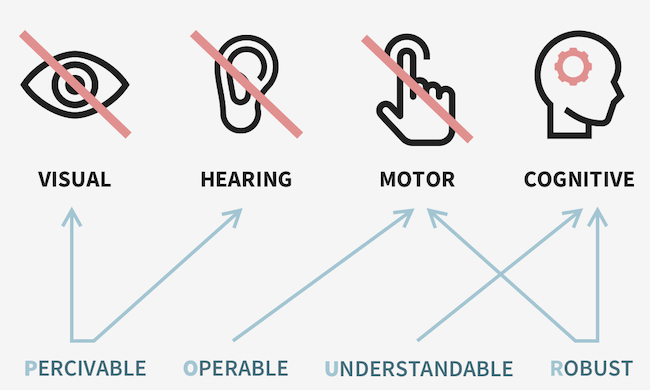News Blast: Your Daily Update
Stay informed with the latest news and trends.
Web Accessibility: The Secret Ingredient for Inclusivity
Unlock the power of web accessibility and discover how it enhances inclusivity for all. Your site deserves to be welcoming!
What is Web Accessibility and Why Does It Matter?
Web accessibility refers to the practice of making websites usable for everyone, including people with disabilities. This involves ensuring that all users, regardless of their physical or cognitive abilities, can perceive, navigate, and interact with web content. To achieve this, web designers and developers implement various techniques, such as using semantic HTML, providing text alternatives for non-text content, and ensuring that all functionalities are available from a keyboard. Accessibility is not just a legal requirement in many places, but also a way to enhance user experience and expand reach to a broader audience.
So, why does web accessibility matter? Firstly, it promotes inclusivity, allowing individuals with disabilities to access information and services online just like anyone else. This not only supports social equity but also makes good business sense, as it opens up websites to a larger customer base. Secondly, accessible websites tend to have better SEO performance because they are generally organized in a way that is easier for search engines to understand. Lastly, enhancing the overall usability of a site benefits all users, not just those with disabilities, creating a better experience for everyone.

7 Key Benefits of Making Your Website Accessible to Everyone
Making your website accessible is not just a legal requirement; it also opens up your content to a broader audience. By implementing accessibility features, you ensure that individuals with disabilities, including those who are visually or hearing impaired, can navigate and benefit from your site. This inclusivity can significantly enhance user experience and foster a sense of community. Accessible websites ultimately lead to increased traffic and engagement, as more people can interact with your content effectively.
Furthermore, prioritizing web accessibility enhances your search engine optimization (SEO) efforts. Search engines favor websites that provide a seamless experience for all users, including those using assistive technologies. By using proper headings, alt text for images, and descriptive link text, you not only improve navigation for individuals with disabilities but also boost your site's ranking in search results. In summary, making your website accessible is a win-win situation that leads to greater visibility, a larger audience, and a significant competitive advantage.
How to Start Implementing Web Accessibility Best Practices
Implementing web accessibility best practices is essential to ensure that everyone, including individuals with disabilities, can access and navigate your website effectively. Start by assessing your current website using accessibility evaluation tools, which identify potential barriers and inconsistencies that may hinder usability. Once you have a clear understanding of the existing issues, you can prioritize them based on severity and impact. Consider creating a checklist of web accessibility standards, such as those outlined in the Web Content Accessibility Guidelines (WCAG), to guide your improvements.
Next, focus on incorporating accessible design principles into your web development process. This includes using semantic HTML to improve screen reader navigation, providing alternative text for images, and ensuring sufficient color contrast for text readability. Additionally, consider implementing keyboard navigation and providing clear focus indicators for interactive elements. By making these enhancements, you're not only adhering to best practices but also creating a more inclusive online experience for all users.